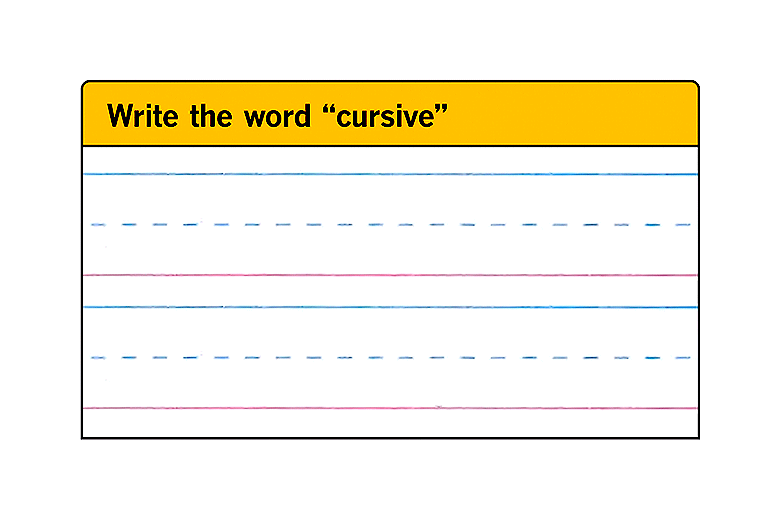Greetings! Cards With Personal Notes Are the Latest E-Service
- Share via
SAN FRANCISCO — Lust, anger, compassion, sorrow, love, pleasure, jubilation--Ghee Ling expresses them all on a daily basis, sometimes within minutes of each other.
“You are the best dad I know!” she writes on a Father’s Day card, signing it, “Love, Your Wife.” A moment later, she picks up a condolence card for the death of a child. This time she writes in her beautiful script, “We are so sorry for your loss.”
Ghee Ling isn’t sending the first card to her husband and doesn’t know the unhappy couple who will receive the second. The words she just wrote were ordered by people taking advantage of one of the more peculiar benefits of dot-com technology: the ability to send the most personal cards through the U.S. mail without ever touching them.
Handwritten greeting cards are the latest in a long line of routine activities subsumed into the Internet, including ordering groceries, attending concerts, chatting with friends, applying for jobs. Increasingly, people deal with ordinary life through a computer screen. Thanks to technology, everything’s getting more convenient, if a little less intimate.
In a typical day as chief scribe for the greeting card company Sparks.com, the 44-year-old Ghee Ling will write more than 100 messages for people too strapped for time to do it themselves. They choose a card from one of the 14,000 that Sparks offers (at https://www.sparks.com), compose their sentiments and e-mail the order back.
Week before last, in an onslaught that peaked the Thursday before Father’s Day, many of the cards were destined for dads. Messages tended to be concise: “Dad, just a note to tell you how much you mean to me.”
“Very straightforward,” said Ghee Ling, who recently emigrated from India. “Mother’s Day was very interesting. Father’s Day, not so much. You can have many fathers. Your mother can marry again. But your mother’s your only one. You feel it more deeply.”
But it’s not just mothers and fathers who receive personalized cards. Ken Ward, a Cedar Hill, Texas, real-estate investor and self-described “crummy shopper,” sent his wife, Janet, about 10 cards as she was turning 50 . . . and they live together.
Before, Janet might have gotten one birthday card from him. If she was lucky.
“They don’t sell cards on the golf course,” explained Janet, a retired math teacher.
The cards she receives now are personalized but in a somewhat antiseptic way. Ken never touches them. This doesn’t bother Janet. In fact, she’s taken to sending cards this way herself. While admitting there are probably occasions where it isn’t appropriate to have a dot-com write out your card for you, she added, “I can’t think of any right now.”
Getacard.com, a newly launched competitor to Sparks (https://www.getacard.com), doesn’t employ scribes, saying its surveys showed customers didn’t like it. “No one wants to see someone else’s handwriting on a card,” said Chief Executive Gary Hickox. “It isn’t personal.” Instead, Getacard prints the sender’s message using computer technology that replicates the sender’s signature.
*
Customers can fax in up to five variations--full name, first name, name with partner or spouse (“Bill and Judy”), nickname appropriate for some (“Loverboy”), salutation appropriate for others (“Love, Uncle Bill”)--and it will appear in facsimile on any greeting cards they buy.
“It’s more intimate to send a card this way,” said Hickox. “People want that personal touch, even though it may be a replica.”
Getacard is working on technology that will allow its customers to fax entire messages. As soon as this feature kicks in, Hickox predicts, all the physical cards sold online will be personalized.
“People just have to get used to it,” he said. “Think of all the young people who have never manually opened a garage door or never touched the control panel on a television--all they know how to use is the remote. It will be the same with cards. Why have it sent to you to personalize and mail when we can personalize and mail it for you?”
Etiquette experts are reacting cautiously to the phenomenon. “Most people really want the warmth of a note handwritten by the person sending it,” said Peggy Post, who recently updated her great-grandmother-in-law Emily’s classic work on manners. “I won’t say this is terrible, but I definitely don’t feel it’s the preference.”
On the other hand, “it’s certainly better than sending nothing at all,” Post said. “It’s a gray area.”
Judith Martin, best known as Miss Manners, was slightly more enthusiastic, at least at first. “This is not a Cyrano de Bergerac situation,” where the big-hearted fellow (in Edmund Rostand’s classic play) provides the poetry to help another man woo Cyrano’s true love.
“A similar example would be sending flowers to another city with a card you didn’t actually sign,” Miss Manners said via fax. “There’s no real violation unless a card is sent when a letter is required--which would include using a card, personally signed or not, to break up a romance.”
That’s exactly what someone recently used Spark’s personalization service to do. A young woman sent a message to be appended to a card (ironically, one with the printed message “I miss you”) for her boyfriend. She didn’t want to see him anymore because he was two-timing her, she explained.
For many users of Spark’s service, it’s a question of time. Two weeks before a major holiday--Valentine’s Day, Christmas, Mother’s Day, Father’s Day--90% of the cards ordered go to the customers, who mail them out themselves. But the proportion starts to reverse as the holiday draws closer.
*
For others, the service’s convenience is the draw. “I’ve sent a condolence card to a family that I wasn’t extremely close to, and I had it handwritten,” said Shannon Raffetto, who works for a San Francisco public relations firm. “Those people don’t know what my handwriting looks like.”
She’s sent quite a few cards to friends and relatives, “and I’ve never had a complaint.” When her fiance got one, he exclaimed, “Wow, your handwriting is so great.” When Raffetto set him straight, it didn’t bother him. “I don’t think it’s an issue,” she said. “It’s the thought that counts.”
The Internet is accelerating the middleman role of technology in human communication. Instead of going out in the world to purchase a gift, you can order something from a Web site, and have it mailed too. Instead of getting together with friends, you can spend the evening instant-messaging them. Instead of telling that special someone you would like to go to a poetry reading with her, you use a service like E-crush, which paves the way electronically.
“The trouble is, there are hidden costs associated with these new technological advantages,” said Susan C. Herring, an associate professor of linguistics at the University of Texas and editor of the anthology “Computer-Mediated Communication.”
E-mail, for instance, provided a way to reach out to the world, but it also lets the world reach back in, often in numbing volume. Having cards handwritten is proving popular because it’s easy and convenient, but “something that’s too easy and convenient may not carry as much weight or meaning,” Herring said.
At the moment, ease and convenience seem to be winning out. One recent Thursday, Ghee Ling had five people helping her write cards; before Valentine’s Day or Christmas, as many as 20 people can be drawn from around Sparks to pitch in.
Since penmanship is not a high priority in American schools, the core scribes are all immigrants. “In my country, we had to practice handwriting every day in two languages--Vietnamese and Chinese--and had to do it perfectly,” said Phuong Ha, who came from Vietnam 20 years ago.
She’s just finished a cryptic card that had several inexplicable private references in it. “Their language we don’t know,” she said. “We have to copy exactly what they say.”
The scribes work at a long table in the vast Sparks office, a converted warehouse. There are computers at hand, but they employ the most low-tech of communications instruments: good pens. They wield their ultra-fine-point Sharpies quickly but carefully; a mistake means a wasted card.
Most messages are brief, most are happy. The memorable ones are not--the family that lost a child to an accident; the family whose 16-year-old died in a car crash.
“Last week, I had seven cards about a loss,” said Ghee Ling. “I just like to forget it. If I think of those, my tears would be running down. When I write it, I feel it, and then I just switch off.”


